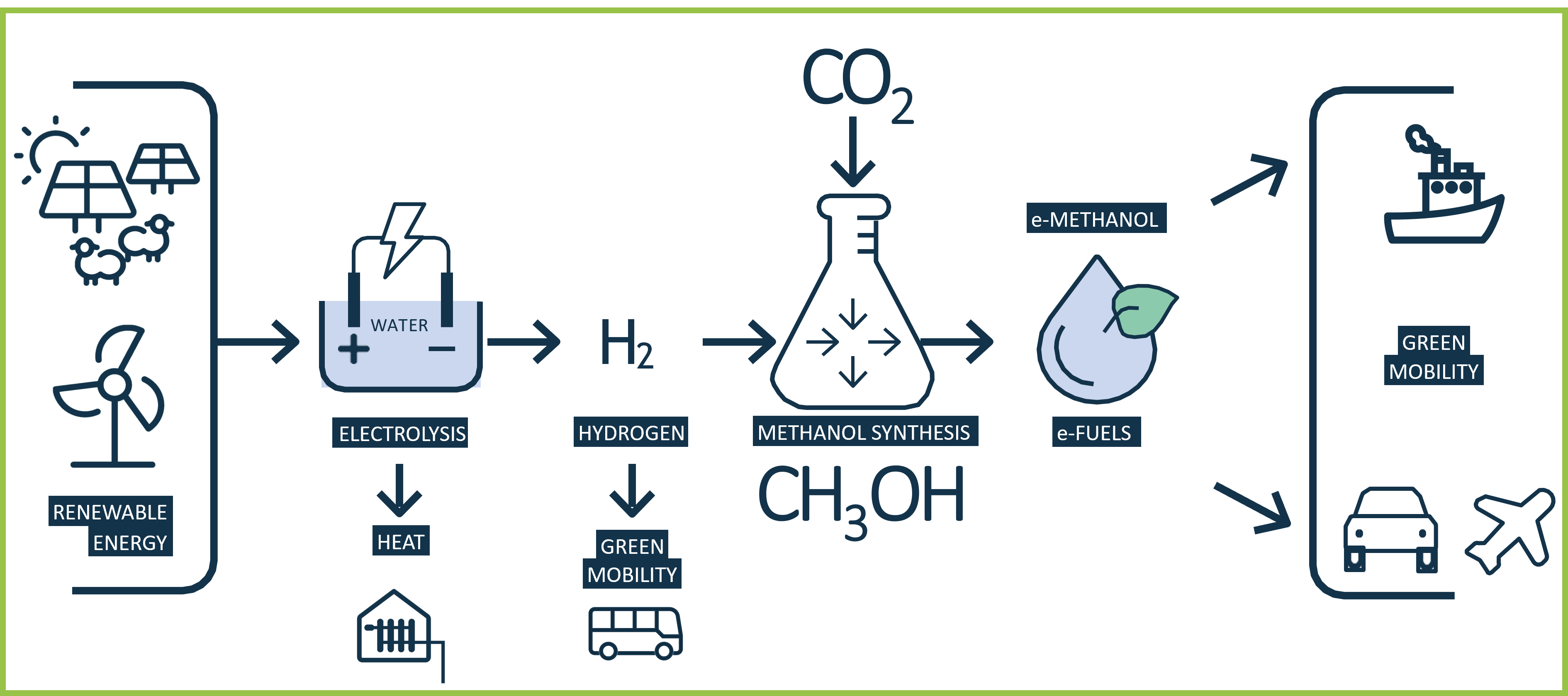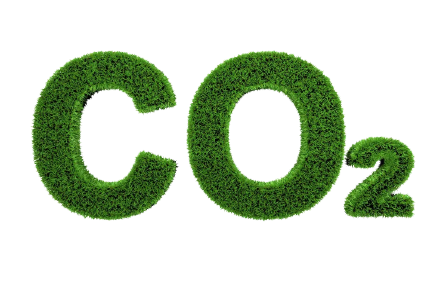our Focus
Sector Coupling
We are happy to welcome you to our world of innovative future technologies!
All our projects and services are driven by one goal: to create a holistic energy cycle in terms of sector coupling.
Sector coupling – a big buzzword in the energy transition. But what exactly do we mean by this? Sector coupling involves linking the sectors electricity, heating and mobility.
Sector 1: Electricity
To be able to supply our technologies with green electricity, we are active in the project development of PV and wind energy plants. We start off the procedure by securing areas that are suitable for green electricity plants and developing them until they are ready for construction. In addition to our infrastructure, the electricity generated can also be made available to neighbouring communities, thus contributing to making the energy supply secure and reliable.
Sector 2: Mobility
This self-produced, green electricity enables us to operate electrolysers. By carrying out electrolysis, we are able to split water, i.e. H2O, into its components, hydrogen and oxygen. We now have green hydrogen, which can be used as a fuel for vehicles, making transport more sustainable.
But that’s not all. Said green electricity also powers our methanol plants, where the mentioned green hydrogen and biogenic CO2 are used to produce e-methanol. What’s that good for? e-methanol is a sustainable fuel alternative for global shipping. The ecological footprint of global shipping is extremely high and responsible for almost 3% of global CO2 emissions. A green alternative is desperately needed – and we offer it!
Sector 3: Heat
Lastly, we also contribute to the heat sector with our electrolysers. The production of hydrogen generates valuable waste heat as a by-product, which we can utilise in local and district heating networks and thus strengthen the local economy.

Green Electricity
The first step for our innovative green technologies begins here. Only with green electricity are our end products – heat, hydrogen and methanol – truly green. We plan, build and operate our own power plants to guarantee a complete cycle and not be dependent on third parties for our production. While our team holds many years of experience in the solar industry, we are currently establishing ourselves in the wind energy sector.
Photovoltaic
As project developers for free-standing photovoltaics, we are the visionaries who turn sunlight into business opportunities. This means that we not only create ecological value, but also generate financial returns by utilising the inexhaustible power of the sun to convert it into electricity. This is the fascination of photovoltaics, a technology that paves the way for pioneering projects. We are convinced that photovoltaic technology will play a key role in the energy transition and will very soon be able to cover a significant proportion of the world’s electricity needs.
A quick summary of the technological background: photovoltaics (PV) refers to the direct conversion of sunlight into electrical energy. This process is based on the photovoltaic effect, which is made possible by semiconductor materials and gives the technology its name. Photovoltaic modules consist mainly of silicon solar cells. These cells absorb sunlight and convert it into electrical energy. The energy generated therefore increases with the intensity of the incident sunlight.
Our land use
We aim to make optimum use of the limited resource pool of land and to sensibly combine the interests of agriculture, nature conservation and local residents with economic feasibility, sustainability and regional value creation. We are continuously looking for suitable locations for solar parks and transformer stations as we work towards our expansion targets.
Our selection of optimal locations is based in particular on legal requirements. On the one hand, we focus on areas defined by the EEG 2023, including conversion areas. Secondly, we prioritise areas that are located within 200 metres of motorways and double-track railway lines. Since 2023, these areas have been classified as privileged projects in outdoor areas by the German Building Code and are therefore generally permitted for free-standing PV plants.
Our philosophy is therefore not to simply overload all available open spaces with solar and wind parks, but to select them carefully. In doing so, we focus on a selection that is orientated towards the individual requirements of each project and has a high probability of approval. Our overarching goal is to harmonise the interests of landowners, municipalities, local residents and nature conservation.
e-methanol & Green Hydrogen
PV plant built… what comes next?
Once the site has been successfully secured and the park built, the plant sets its forces in motion and begins to generate green electricity.
But where does this electricity go and what does it actually do?
Instead of transporting the electricity across the country, it is used locally. People in the immediate surroundings will be able to reap the benefits of the plant – a win-win situation for the entire region. However, the electricity has more versatile ambitions. It not only powers households and factories, but also our pioneering Power-to-X technologies.
Under the Sun2Gas brand, we plan, build and operate electrolysers and e-methanol plants that produce e-methanol on-site from green hydrogen and biogenic CO2 – energy-rich fuels for the sustainable mobility of tomorrow. In addition, the electrolysis process supplies approx. 75 degrees of heat, which can be utilised in the local and district heating networks of the surrounding towns and villages.
In other words, the green electricity generated creates a seamless link between electricity, heat and mobility – key-word sector coupling. This creates a closed energy cycle that leads to a sustainable future.
How e-methanol is produced
Before the energy transition, methanol was traditionally produced from fossil fuels. Several chemical processes are used to produce a synthesis gas from which raw methanol is derived in a catalytic process.
Due to the progressive climate change, the fossil production of methanol has been revolutionised. Green methods for methanol production from renewable sources such as wind and solar energy are becoming increasingly important. The resulting “green methanol” can then be used as an energy source for storing renewable electricity and, as in our case, as a fuel for transport.
But how does it all work?
In addition to green electricity, the environmentally friendly technology for methanol production also requires CO2 and water. The water is split into its components, hydrogen and oxygen, using electrolysis and green electricity. The green hydrogen obtained is then converted into methanol together with the CO2. Of course, methanol production from CO2 is only sustainable if both the carbon and the hydrogen were not made with fossil fuels. The required CO2 can be obtained from concentrated industrial waste gases or from the air.


We will buy your CO2
Do you have a source of CO2 and would like to support us in our green mission? We’ll be happy to buy it from you! Contact us here and let our experts prepare a customised offer for you.



